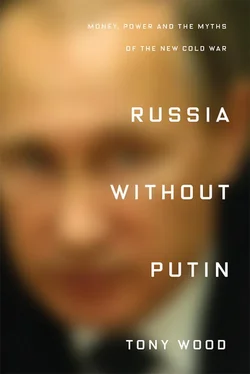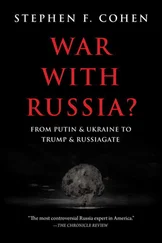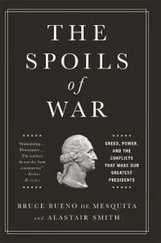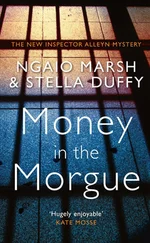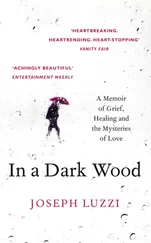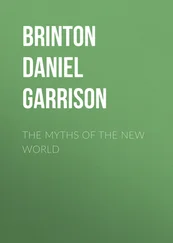Soviet hierarchies of income and skill were also strongly gendered. The USSR had an unusually high female labour-force participation rate: 86 per cent in 1970, compared with 43 per cent for the US, 49 per cent for Japan and 38 per cent for West Germany. {4} 4 Figures in this paragraph from Basile Kerblay, Modern Soviet Society , London 1977, p. 127; and Constance Sorrentino, ‘International comparisons of labor force participation, 1960–81’, Monthly Labor Review , February 1983, p. 25, Table 1.
But Soviet women, with some exceptions, tended to be clustered near the lower end of the wage and skill scale. Like women elsewhere, they were mainly employed in female-dominated sectors where wages were lower: light industry, textiles, education, health care and clerical and administrative work. At the same time, they were held at the bottom of the pay ladder in sectors where women were in the minority: metallurgy, mining, chemicals. Soviet women also had to bear the main burden of housework and child-rearing, not to mention the recurrent, time-consuming task of queuing for food and other basic consumer goods. (Their partners did not offer much assistance. After comparing the time budgets of married and single women, one scholar concluded dryly that ‘the addition of a husband did absolutely nothing to ease the woman’s domestic burden’.) {5} 5 Donald Filtzer, Soviet Workers and De-Stalinization , Cambridge 1992, pp. 201–2.
To all of these social differences could be added further, less formalized distinctions. In response to the generalized shortages so characteristic of life in the USSR, Soviet citizens developed the range of informal practices known as blat , usually translated as ‘pull’. These personal connections and exchanged favours meant better access to scarce food items, clothing, housing, and so on. Indeed, sometimes connections were more useful than actual money.
But perhaps the most important thing the ‘2+1’ formula omitted was the party–state apparatus itself. Membership in the Communist Party was a mass phenomenon: the total went from 1 million in 1921 to 3.6 million in 1933, and though the Great Terror and the Second World War took a tremendous toll, by the late 1960s the CPSU had some 13 million members. {6} 6 T. H. Rigby, Communist Party Membership in the USSR, 1917–1967 , Princeton 1968, p. 53.
They were drawn from across society: some two-fifths were manual workers, and 16 per cent were collective-farm peasants. {7} 7 Figures from David Lane, The End of Social Inequality? , London 1982, p. 117.
Those higher up the income and status ladder were more likely to hold a Party card, but the dynamic also worked the other way around: membership tended to make for greater professional success. Belonging to the Party often conferred informal advantages too, smoothing the way in all kinds of transactions or giving access to scarce goods.
This applied especially to the core of the party–state, the nomenklatura , which by the 1980s comprised anywhere between 400,000 and 700,000 people. {8} 8 The lower figure is taken from Kryshtanovskaia, Anatomiia rossiiskoi elity , p. 17; the higher is from Mikhail Voslensky’s Nomenklatura: Anatomy of the Soviet Ruling Class , London 1984, p. 95.
For some critics of the Soviet system, the nomenklatura constituted a class in itself – as suggested by the title of Milovan Djilas’s 1957 book The New Class , which painted the top layer of the Soviet bureaucracy as an elite caste floating above the rest of the population. But although it enjoyed distinct advantages relative to everyone else, the nomenklatura was not a closed group – it was recruited, albeit somewhat unevenly, from all sectors of society – and it did not technically own any property that it could transmit to its heirs, in the manner of an aristocracy or even a bourgeoisie. At most, the nomenklatura could have been called a proto-class, dedicated to preserving its collective power – which it would soon seek to convert into property.
Soviet society, then, was marked by a number of social disparities. But the basic principle behind these was not rank, as in feudal societies, or class, as in capitalist ones, but a more ambiguous, sui generis mixture. On the one hand, many of the socio-economic features and cultural markers that distinguish classes from one another were present; but on the other, the political hierarchy of the party–state created peculiar pressures and opportunities of its own. After 1991, this uneven social landscape did not vanish with the system that created it. Rather, it served as the basis for a new and far more drastic differentiation.
After the fall of the USSR, the dismantling of the planned economy and the Yeltsin government’s free-market reforms set in motion a vast machinery for the creation of inequalities. According to World Bank data, in 1988 Russia had a Gini coefficient of 0.24, which placed it in the company of, say, Sweden; by 1993, the figure stood at 0.48, putting it on a par with Peru or the Philippines. These figures only cover officially declared income, so the actual rise in inequality was surely far greater; recent estimates based on a broader set of data show Russia’s Gini coefficient doubling in five years, from 0.32 in 1991 to 0.64 in 1996. {9} 9 See Filip Novokmet, Thomas Piketty and Gabriel Zucman, ‘From Soviets to Oligarchs: Inequality and Property in Russia, 1905–2016’, NBER Working Paper 23712, August 2017, p. 69, Figure 10c.
The trend was especially visible at either end of the scale: even as the oligarchs rapidly acquired their fortunes, poverty was soaring. In 1992 – the year Yeltsin initiated his ‘shock therapy’, including a deregulation of prices that tripled the cost of food virtually overnight – the International Labour Organization classed 85 per cent of the Russian population as poor. {10} 10 Bertram Silverman and Murray Yanowitch, New Rich, New Poor, New Russia: Winners and Losers on the Russian Road to Capitalism , Armonk, NY 1997, p. 46.
In response, the Yeltsin government adopted a new method for measuring poverty – whereupon the figure fell to 36 per cent. (This solution is reminiscent of Brecht’s advice to the GDR leadership, after the East Berlin rising of 1953, to ‘dissolve the people and elect a new one’.)
What was supposed to be a temporary jolt turned into a prolonged economic slump, as Russia’s GDP contracted by more than a third between 1991 and 1995 – a steeper decline than in the US during the Great Depression. According to World Bank figures from 1996, more than two-fifths of the population – some 60 million people – were living on less than $4 a day, compared with 2 million in 1989. {11} 11 World Bank, ‘Russia: Targeting and the Longer-Term Poor’, May 1999, Volume I, p. 6, Table I; Reddaway and Glinski, Tragedy of Russia’s Reforms , p. 302.
Symptoms of social breakdown multiplied: unemployment spiked, and crime and murder rates doubled in the early 1990s. Public health deteriorated with incredible speed: male life expectancy, for example, dropped by five years between 1991 and 1994.
Across Russian society, economic differences grew more prominent than ever before. The arrival of the market brought what economists euphemistically call ‘wage decompression’. Soviet incomes had varied, as we have seen, depending on workers’ skills, education, sector, region, gender, and degree of political privilege. In the 1990s, the range of variation became much broader. In Soviet times, for instance, average wages in different sectors of the economy had mostly hovered within a range of 25 per cent either side of the nationwide average. Come the 1990s, wages in the ‘fuel-energy complex’ – oil and gas – rose to more than three times the national average, whereas trade, health care, culture and light industry saw wages tumble to between 55 and 69 per cent of the average. The sector that lost out most dramatically was agriculture, where wages collapsed to barely a third of the national average. {12} 12 Leonid Gordon and Eduard Klopov, Poteri i obreteniia v Rossii v 90-kh. Tom 2: Meniaiushchaiasia zhizn’ v meniaiushcheisia strane: zaniatost’, zarabotki, potreblenie , Moscow 2001, pp. 360–61, Table 16.5.
Читать дальше
